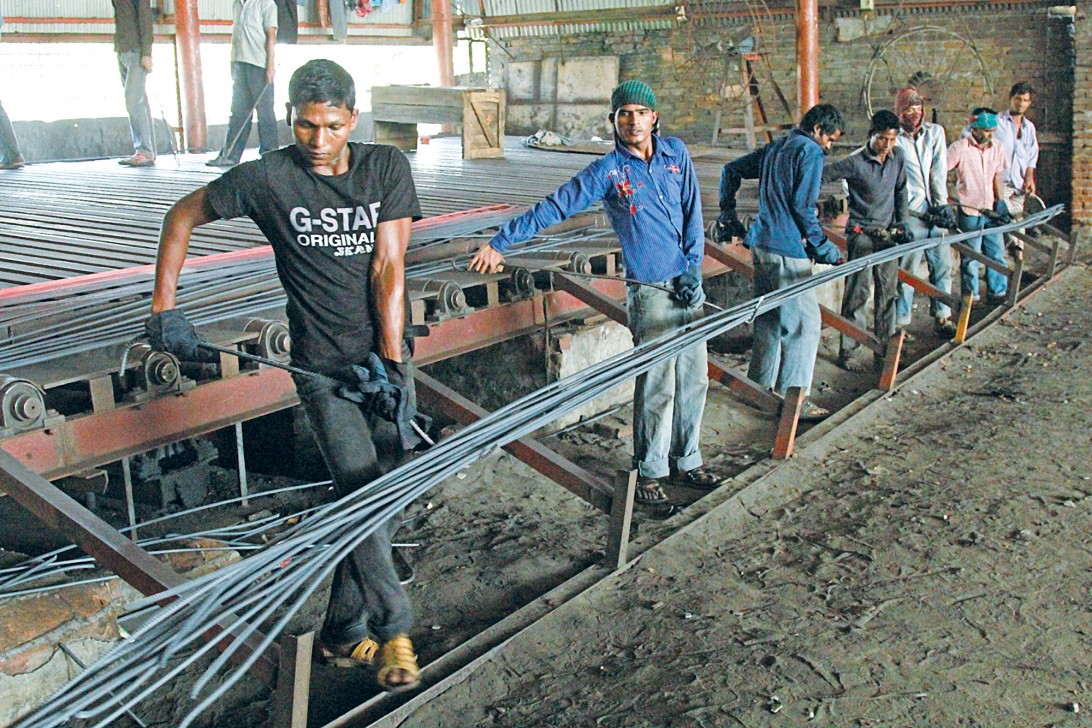Rod price falls on low demand, scrap price slump

In a surprise development, prices of mild-steel rod fell in Bangladesh owing to lower demand, the fall of raw material prices in global market, and the slow start of development projects in the first quarter of the current fiscal year.
When the budget for the current fiscal year was unveiled in June, steel millers had been apprehending an average increase of retail price of rod by Tk 9,000 per tonne, owing to a number of new VAT and tax measures and gas price hike.
They had predicted that the price would go up to Tk 70,000 to Tk 72,000 per tonne.
But yesterday, the popular 60-grade rod was selling at Tk 65,000 to Tk 70,000 in markets in Dhaka, whereas the 40-grade MS rod was selling between Tk 57,000 and Tk 60,000, according to the state-run Trading Corporation of Bangladesh.
But a month ago, the 60-grade rod had been selling at Tk 67,000 to Tk 70,000 and the 40-grade rod at Tk 58,000 to Tk 60,000.
“Sales of rod fell around 20 percent in the first quarter of the fiscal year. The price of steel rod has declined by Tk 2,000 per tonne on an average in the last one month,” said Alamgir Kabir, chairman of GPH Ispat Ltd.
He said the price of steel went down because of the fall of prices of raw materials in the global market.
The price of scrap, the key raw material for steel, came down to $361 per tonne from $389 globally, according to a miller.
Since May, the price of scrap has fallen by $30 per tonne, said Tapan Sengupta, executive director of the BSRM.
Government consumption of rod dropped in the July-September period. Similarly, the private sector consumption was also down, owing to the slowdown of the real estate sector.
Government projects account for 35 percent to 40 percent of the total steel consumption, while the private sector accounts for 30 percent and individual consumers the rest.
Kabir, however, is optimistic and said the situation might change for the better in the second half of the fiscal year.
Md Shahidullah, secretary general of Bangladesh Steel Manufacturers Association, said sales usually fall a bit in the first quarter of a fiscal year compared to other quarters owing to lower demand.
He assumed that the government is not making payments to contractors, who are not buying rods for the development projects as a result.
“We assumed the sale will go up this year like in the last year as the implementation of mega projects is going on in full swing,” said Shahidullah, also the managing director of Metrocem Steel. According to him, millers sold 5 lakh tonnes of rod per month last year, but it declined to 4 lakh tonnes so far this year.
The persisting liquidity crisis in the banking sector may continue to pose challenge to the sector, he said.
Bangladesh’s rod consumption has been growing at a healthy pace in the last couple of years thanks to higher purchasing power of people in the rural areas and an increase in the number of development projects undertaken by the government.
Annual consumption rose by 15 to 20 percent in the last two years from 10 percent per year previously. Bangladesh today consumes about 55 lakh tonnes of rod a year and has an installed production capacity of 70 lakh tonnes to 90 lakh tonnes.
